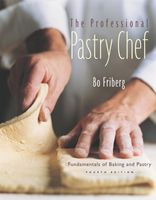Label
All
0
Clear all filters
Yeast
Appears in
By Bo Friberg
Published 1989
Yeast is an essential ingredient for the baker. It is a living microorganism, actually a fungus, that multiplies very quickly in the right temperature range (78° to 82°F/25° to 27°C). In a bread dough, the yeast feeds on the sugars (both the actual sugar added to the dough and the sugar produced from the wheat starch in the flour), fermenting them and converting the sugars to carbon dioxide and alcohol. As the bread bakes, the carbon dioxide is trapped within the dough, causing the bread to rise; the alcohol evaporates during baking. Besides the yeast naturally present in the air, three types are available commercially: fresh (or compressed) yeast, dry yeast, and brewer’s yeast. As the name implies, this last product is used mainly in the production of wine and beer; only fresh and dry yeast are used in baking.
Part of
Advertisement
Related Recipes
-
-
-
-
Related Reference
-
-
-
-
Advertisement
The licensor does not allow printing of this title



